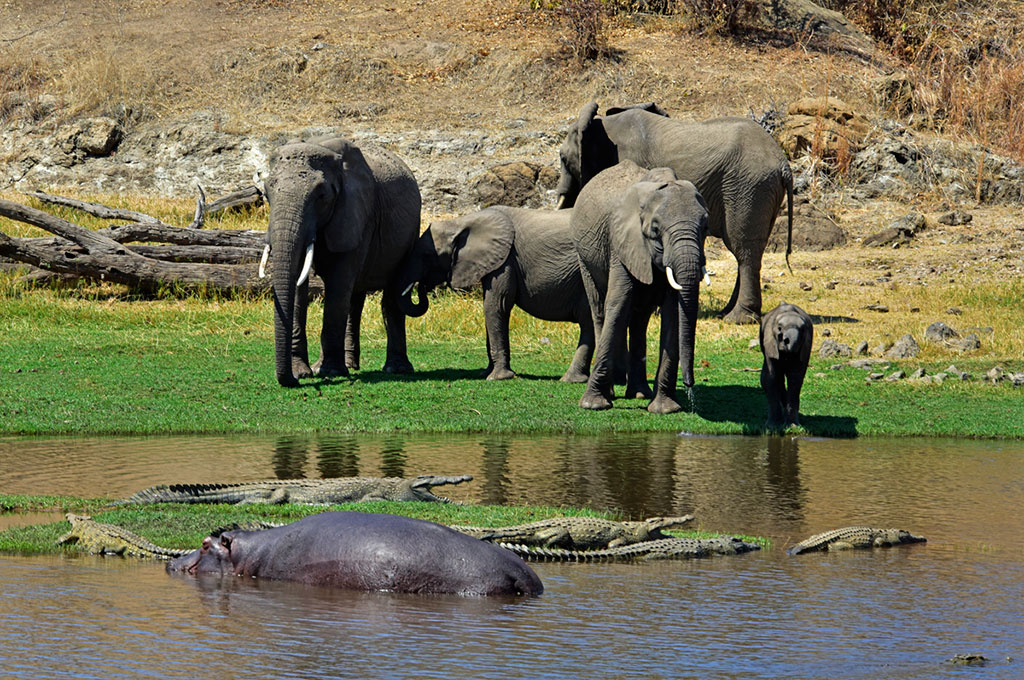Ruaha was recently expanded and become the Tanzania’s largest National Park followed by Serengeti, Ruaha National Park is a remote bastion of spectacular wilderness, undisturbed wildlife, and breathtaking scenery.It lies 130 kilometers west of Iringa town.Its name derived from the Great Ruaha River, which flows through it creating spectacular gorges and scenery.
Hippos, crocodiles, turtles and fish inhabit the river. The park is also known for its sable and roan antelopes, and its rich bird life. Photography blinds have been built at strategic places where wildlife congregates. With herds of more than 10,000 elephants, vast concentrations of buffalo, gazelle, and over 400 bird species, Ruaha’s limitless wilderness, together with the surrounding game reserves of Rungwa and Kisigo — stretches over 40,000 square kilometres. Elephants are found in some of the highest concentration in the country, travelling in matriarch-lead herds through ancient grazing lands and seasonal supplies of water.
The Great Ruaha River is the main feature of the park, and meanders through its borders. On its banks, the game viewing is spectacular, whether done by land or by water. Hippos yawn under the midday sun and crocodiles lie lazily along the banks. Fish eagles dive and swoop along the riverbanks, and at night the sound of frogs croaking happily in the reeds extends across the hills and plains. Boating safaris are starting to gain in popularity, and provide a popular alternative to viewing the area by car
Most of the national park is located on the top of a 900 metre plateau whose ripples of hills,valleys, and plains makes the game viewing topography beautifully unique. Small mountains run along the southwest borders of the park and their tree-covered slopes are visible in the distance. During the rainy seasons, dry river beds swell with the biannual deluge and within days, a thin coat of green covers all the land in sight.
For the more discerning safari lover who is looking for an ‘off the beaten track’ pure wilderness experience, a visit to Ruaha to view its large beasts, stunning vistas, numerous baobabs and its unique birds and animals must not be missed!!
The best months for game viewing are July to November, as animals concentrate at water sources. The park can be visited throughout the year, but in March and April some of the roads are not accessible.
Area –10,300 km2
Getting there: scheduled or charter flight from Dar es Salaam, Serengeti or Arusha
By road from Dar es salaam via Mikumi – (about 10 hours drive)




